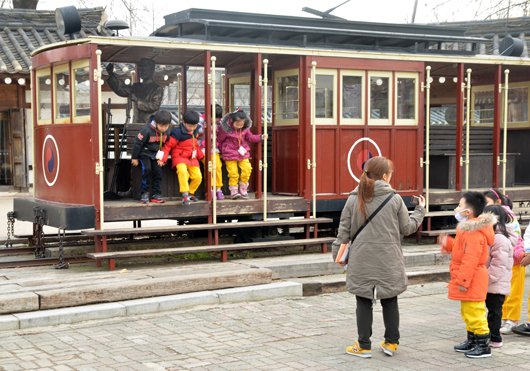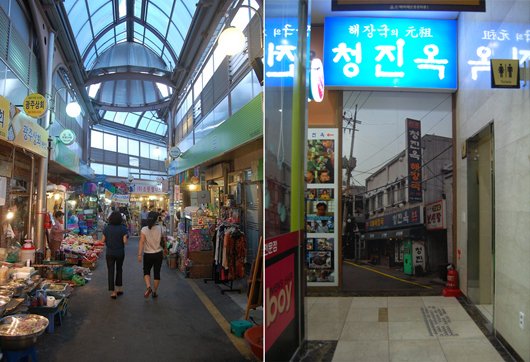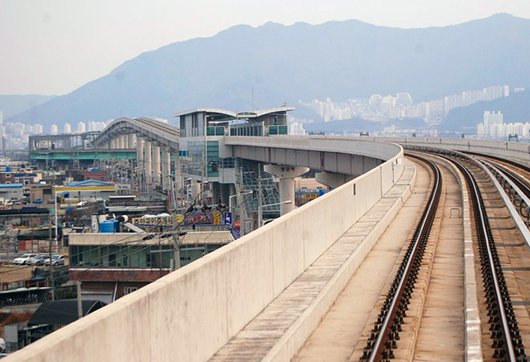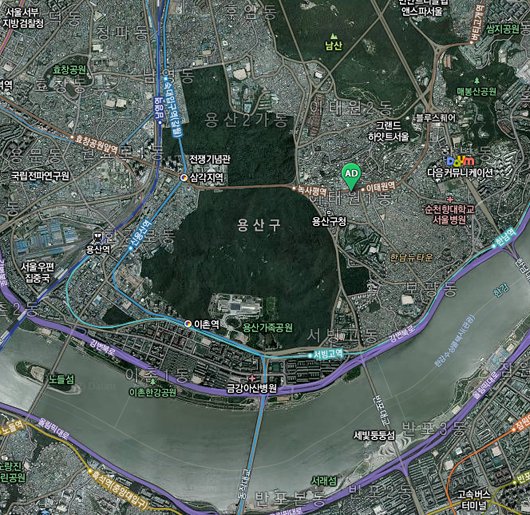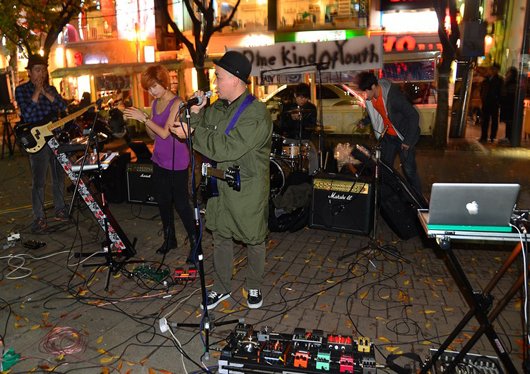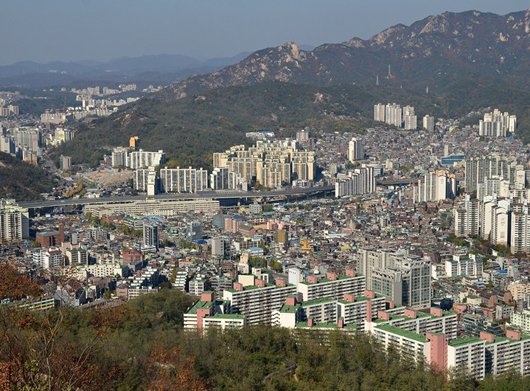Seoul 2063: ten predictions of the future

Written byJon Dunbaron November 30, 2012 inLifestyle
Usually predicting the future is left to false prophets or science fiction writers (orboth), but there is an actual field of study called futurology that concerns itself with predicting future trends.
Using a variety of extrapolating and trend analysis techniques, futurologists make predictions in technology, urban planning, anthropology, philosophy, political science, and more. Sometimes you get ludicrous predictions about flying cars, jetpacks, and cities on the moon, but sometimes you wind up with the Internet, automated trains, and gene-splicing. There's no way to evaluate futurist claims until the prediction date arrives or they come true, but that doesn't matter because they're a lot of fun and may help inform long-term planning.
Yeah…keep dreaming.
I've previously written aboutthe Seoul of the pastas well as covered the way it is now, so I'll draw on what I've learned to write about the way things will be that haven't happened yet. I decided to focus on Seoul rather than all of Korea, because who knows what shape the country will be in in 50 years, especially regarding reunification, the biggest wild card of all. And I chose 50 years in the future because as far as I know all cities and demographics may have totally been changed by then, and today's planned construction projects will have been long completed and considered old news for a couple decades. Plus, I probably won't be around in 2063 to be proven wrong.
Anyway, I've put together ten predictions I have for the year 2063. I'll also take a guess at the likelihood of each, which I cap at 50 percent on the premise that no prediction can be more likely than the possibility that it won't happen.
Hanok Neighbourhoods
Currently, there are two Hanok New Town construction projects under way in Seoul: one in Eunpyeong-gu to the northwest and one in Seongbuk-gu to the northeast. These are unique in that they are not Hanok restorations, but entirely new creations. We'll get to see the first of these completed in only a couple years, but unlike the Hanok villages in Bukchon and Namsan which have become tourist destinations with homestays and event venues, these ones will be purely residential. Lacking heritage, the new Hanok design will be applied to modern buildings for modern living, with the introduction of multi-unit Hanok townhouses and two-story Hanoks.
Over the next 50 years, Korea's low birth rate and aging population will result in a sharp population decline. As well, the pressure will be further taken off Seoul by the growth of Sejong City, the new capital down by Daejeon, leading to a sudden surplus of space. I predict that the age of the big-box apartment has seen its apex, and over the next 20 to 30 years as highrise complexes are torn down, they'll be replaced by smaller and smaller developments. So…why not more Hanok villages?
The home of the future.
Likelihood: it's already started, but how far will it go? I give it 40 percent that the Hanok catches on as a viable modern home.
Streetcars Return
One of my favourite things about living in Seoul is that we're not slaves to the car. As sectors of downtown Seoul start to experiment with becoming car-free zones, this city is starting to feel much more relaxed. Insadong is now car-free from 10am to 10pm every day, and Samcheong-dong is car-free on weekends. Further plans are under way to create a Culture and Tourism belt southward to Cheonggyecheon, expanding the car-free region further and further. And Sejong-ro in front of Gwanghwamun–the street between Sejong Center and the American Embassy where you find statues of Yi Sun-shin and King Sejong–has been experimenting more and more with car-free days and events.
We can be certain that over the coming decades cars will be less and less significant in our lives, and eventually all of downtown could be car-free permanently. Imagine a city core where you can freely walk around and never worry about crosswalks or traffic lights. But of course it would be unreasonable to expect everyone to walk around everywhere, and the current subway system makes it so you have to transfer twice to get from City Hall to Myeongdong, so how will people get around downtown?
Why not bring back the streetcar? It's an eco-friendly, pedestrian-friendly vehicle that has a fondly remembered heritage in Seoul, and I'll be surprised if it takes as long as 50 years to make unmanned streetcars safe. With enough streetcars to whisk people around, I can imagine downtown Seoul becoming a very comfortable place for all. If Seoul is like many other cities that bring back the streetcar, you can probably expect to see a mixture of vintage cars as well as new high-tech ones.
Why are they called streetcars anyway? Aren't all cars by function streetcars?
And if you've been around Cheonggyecheon in recent years, you've probably also seen the return of the horse and buggy. That's right - a century ago, futurologists were calling for the automobile to replace the horse-and-buggy and the streetcar; now that trend is reversing. I've heard that the current mayor has banned the horse-drawn carts, but in 50 years maybe they'll come back once again as a novelty–or just to get really out there, be replaced by robot horses.
Likelihood: this one comes out of left field. 20 percent.
Traditional Markets Preserved, But…
The traditional markets of Seoul have suffered in recent years, leading to a growing number of initiatives aimed at reinvigorating the markets and their traditional culture. Will they succeed in preserving the markets? I think it's impossible to accomplish without changing their fundamental nature. Let's face it - despite the wonderful heritage and culture of the old markets, they're an inefficient use of land, they're exposed to the elements, and they're aging. And as the people of the markets and their customer base age, the way we shop is changing drastically. The only question is how much nostalgia will win out.
In order to preserve the markets, they'll have to become more like living museums, where visitors are offered a carefully planned experience. A good example of this model is Tongin Market, a covered market that even offers its own special currency that can be spent on the various foods offered there. Could this be the eventual future for Gwangjang Market too?
Under this model, there's no way all the markets will survive. The central ones have the best chance of staying alive as the token traditional markets, places like Namdaemun, Tongin, and Gwangjang. The markets centered around food also probably have a better fighting chance, because while we might prefer to shop online, we will always seek out the dining-out experience.
Another possible model for the future markets is compromise and complete metamorphosis, changing form radically but retaining their function as places of commerce. Take for example Dongdaemun, once home to thriving flea markets, which is now mainly department store highrises. Or Pimatgol, a fascinating traditional area of downtown that has mostly been redeveloped. But in the basement levels of Le Meilleur Jongno Town, you can find a lot of the old restaurants that survived by moving into the new building. So maybe the future will see Namdaemun Shopping Mall, or Pyounghwa Underground Shopping Complex. Not the happiest of fates, but it beats unnostalgically bulldozing them.
Two paths for traditional markets: Tongin Market (left) is turning into a living museum, while demolished stretches of Pimatgol (right) continue to exist as a memory.
I suspect that we'll see either one of these fates happen to all the traditional markets of Seoul by 2063.
Likelihood: I'm going to say 35 percent, lowered in the hope that the markets do stay alive in traditional form, and in the dread that they're bulldozed and replaced.
Shopping Moves Underground
Seoul seems to have hit its stride building underground shopping malls. There are plenty of underground shopping areas across Korea, and they're nothing new in Seoul - downtown is filled with underground shopping arcades, especially around Namdaemun, Myeongdong, and Hoehyeon.
The recent opening of Yeouido IFC Mall has shown that Seoul is not running out of room, as developers dig downward. I'm not saying we're all going to evolve into a race of subterranean mole people who live out our lives under the surface of the Earth, but certain activities could be moved down there, and the city is making headway in underground shopping centers.
This is what the future of Seoul's underground looks like.
It's also likely that much of the city will be connected by underground passages, so it wouldn't be unthinkable to walk from Seoul Finance Center to City Hall, and then to Lotte Department Store, all without ever coming aboveground.
Likelihood: 50 percent.
Elevated Trains
So a lot of our economic activities will move underground, but a lot of things we do now will also come to the surface.
As a bit of a railfan, I can entertain myself for hours reading subway maps that show future lines. Where I live near Hongdae, I've seen the construction of two subway lines: the AREX and the Gyeongui (coming soon). The Bundang Line will soon connect with Wangsimni, and after that the Sin Bundang Line will connect with Yongsan. The Ui LRT will connect northeastern Seoul in a couple years. Over the next few years we'll see many of the current lines extended, and the suburbs outside of Seoul - especially Incheon, Suwon, Seongnam, and Yongin - will become a lot more interconnected.
This is all near-future stuff. And yes, once the tunnels have been built, they'll probably continue to be used for a long, long time - the London Underground still uses tunnels built in 1863, for instance. But I think most of the underground subway lines will still be in use in some recogniseable way in 2063. But I think the future is in elevated trains.
As Seoul becomes less dense and the technology improves, it will be more and more lucrative to build aboveground trains, monorails, peoplemovers, streetcars, eventually moreso than digging new tunnels underground. Korea has already experimented with a few elevated lines - Uijeongbu's LRT, the Busan-Gimhae LRT, the Everline Rapid Transit System in Yongin (open already!), and the failed Wolmi Galaxy Rail - and if making mistakes is the best way to learn, then in 50 years Korea should be an expert at building elevated trains.
Elevated trains like this one in Gimhae are the way of the future, or at least they feel like it.
Likelihood: could just be wishful thinking. 30 percent.
Rivers Uncovered
Nothing has changed the face of Seoul more this century than the uncovering of Cheonggyecheon. Once a river that ran through traditional Seoul, it was covered up during the '60s to make way for more roads for cars. But as we already covered, cars are on their way out and as we rely less on roads, it will be possible to uncover more and more of these streams.
There are a lot more rivers buried underground in Seoul than you might think. Already plans are under way to unearth three streams that originally fed Cheonggyecheon from the mountains surrounding Gyeongbokgung. Baekundongcheon and Okyrudongcheon wind through Seochon to the west of Gyeongbokgung, and Junghakcheon is on the east running under Samcheong-dong. The three streams will eventually be unearthed from the mountains where they originate all the way to the waterfall of Cheonggyecheon. They will also be rerouted to travel through Sejong Plaza, creating a very interesting public fountain.
Left: the restoration of Baekundongcheon mingles with sidewalks in Seochon. Right: the projected Sejong-ro will incorporate the three streams in a new, car-free city boulevard.
And this is just the start. Many of Seoul's streams have yet to be restored. Hongjecheon which runs from Bukhansan to the Han River by way of Seodaemun District is aboveground but dominated by Naebu Expressway. Looking back on my blog post aboutTen secret refuges across Seoul, I see now that the Hongje Waterfall lies in the shadow of the expressway. I think its removal is inevitable.
And that's just the start. Imagine a stream running between Sinchon and the river. And another from Samgakji to the river. Both streams are currently buried under roads, and I think 50 years is enough time for both to be uncovered and restored.
I'm probably the only one who sees a nice city park in this picture.
Currently Cheonggyecheon is supplied by water pumped in from the river and subway flooding. Wouldn't it be interesting if enough streams are restored and Seoul returns to a grid of natural running water?
Likelihood: 50 percent.
Yongsan Redeveloped
Speaking of that stream running through Samgakji, we should mention Yongsan. Currently it is dominated by Yongsan Garrison, a huge US military installation right in the center of the city. As I previously said, I don't want to guess on North Korea relations 50 years in the future (but something's gotta give, right?) but it is clear that the long-term strategy regardless is for the USFK to move south and give back the land to Seoul.
So that means this city will suddenly find itself with a nice big doughnut hole right in the center, just waiting to be redeveloped. What will go there? I've heard of plans to convert it into a gigantic inner-city park to rival Manhattan's Central Park, but the real estate just seems too valuable for that. Homes? Schools? Museums? How about a military theme park? There's room for all that, plus enough left over to make a huge city park.
See that big park area right in the middle? That's not a real park…yet. Currently satellite images of Korea's military installations are banned.
Likelihood: 50 percent.
Itaewon International Food District
Itaewon has been changing identities in recent years as the US military presence weakens. What was once a sleazy drinking area is now filled with nice restaurants featuring food from all over the world. Koreans are rediscovering the area and enjoying its many restaurants. I think by 2063 Itaewon will no longer be seen as a foreigner district, other than for its international cuisine. It will otherwise be culturally indistinguishable from places like Myeongdong (which I seem to recall was also long ago considered a foreigner district).
Likelihood: 50 percent.
Hongdae Gentrifies
Right now Hongdae has a reputation for being the center of live music in Korea. But as land values drive up and the big franchises move in, the indie bands that made the area popular are looking for a way out. As I mentioned in arecent blog post, there have been a lot of new live music halls opening up outside of Hongdae. This university area's identity is reverting to something more mainstream, similar to what happened to Daehangno (also formerly the center of Seoul's live music scene).
I don't know what Hongdae will be known for in 2063. I suspect that a lot of the activity will move underground - literally, as there are plans under way to construct an underground shopping plaza beneath Eoulmadang Road, the main street that forms the backbone of the area.
Where will Korea's live music community move? If I knew, it would already be totally moved out of Hongdae.
Love X Stereo perform in Hongdae Playground at night, under the glow of restaurants, cafes, and bars.
Likelihood: 50 percent.
More Park, Less Mountain
There has been a gradual move toward building more parkland in Seoul, and if we see the construction of a huge city park in Yongsan then I think everyone will stop accusing Seoul of not being green enough. The move toward parkland has a sanitising effect on nature, though, limiting the number of species that can survive in that area.
If you want to experience nature in Seoul, there are many peaks that offer that opportunity, as Imentioned before. These peaks remain one of Seoul's best features, but I can't see that lasting forever. In the years of rebuilding following the Korean War, the less wealthy citizens had to build higher and higher up the slopes of the mountains, creating very interesting communities called moon villages. It has held true throughout Seoul's modern history that higher elevation means lower class.
But thanks to better roads, improved construction techniques, and increased reliance on cars, these mountains have opened up to the wealthy who value a great view rather than foot accessibility, and the moon villages are being replaced by luxurious hillside apartment complexes. It is likely that larger buildings will be built higher up the slopes, encroaching on the mountain environment and also ruining the view for everyone else. Also we can expect to see some of the smaller bumps on Seoul's face shaved off, leaving flat developments such as the Yongsan eComfortable World apartment complex, built on the former location of a hill considered sacred to Korean Catholics.
Likelihood: It's possible Seoul will learn to embrace its bumps and uneven lines sooner rather than later. I give it 40 percent.
So there are my predictions. If you're reading this in 2063, please feel free to post a follow-up evaluating just how much this random guy in the past got wrong. Did I at least do as well asArthur C Clarke?
About the Author
Jon Dunbar is an editor and staff writer for Korea.net. His first visit to Korea was in summer 1996 when he was a teenager, and he returned permanently in December 2003. He is involved in the Korean underground music scene and has supported local musicians through writing, photography, and occasionally planning events. He has been blogging for more than a decade, mainly on music, urban exploration, and his cats
Source from :blog.korea.net


